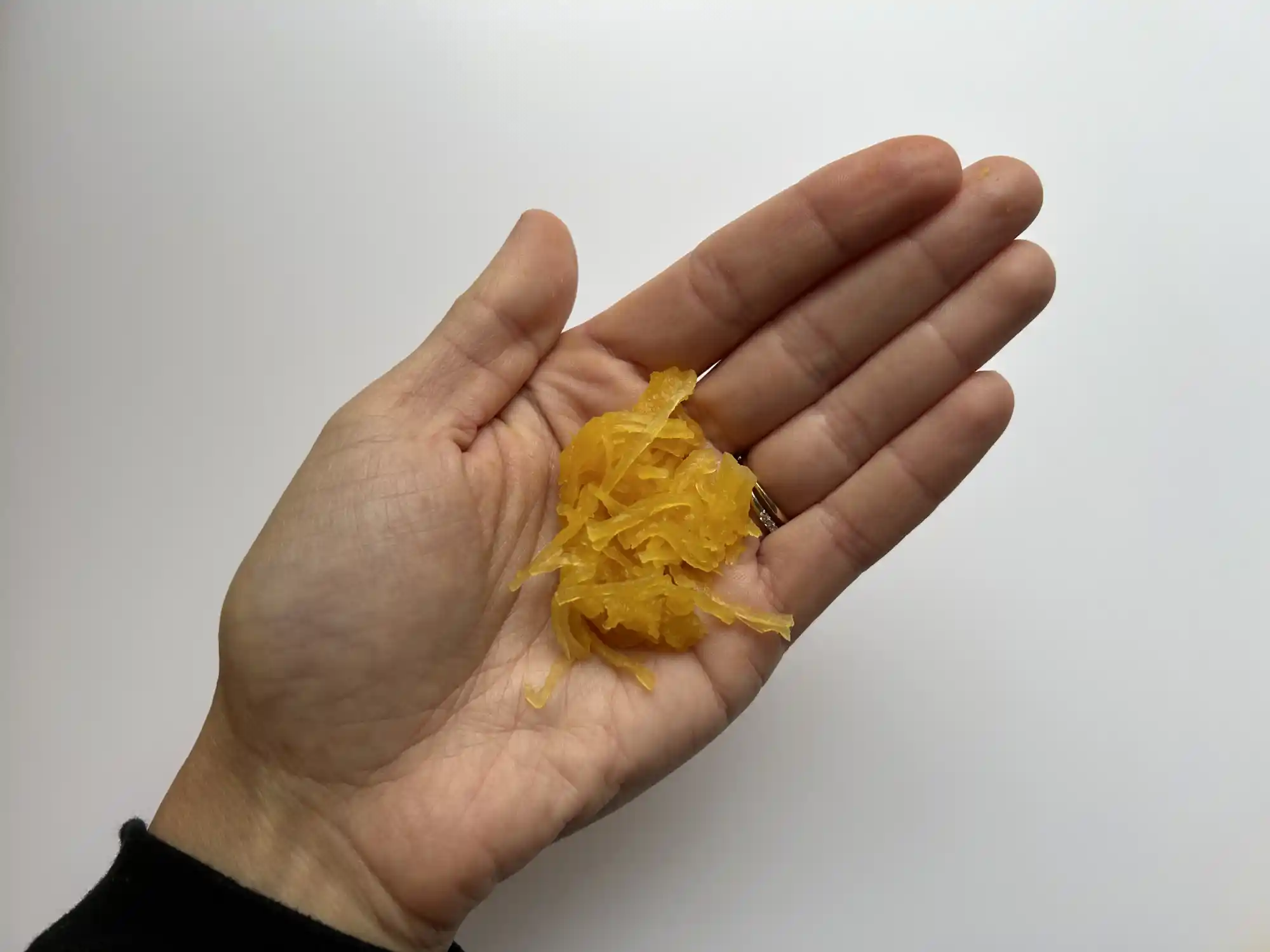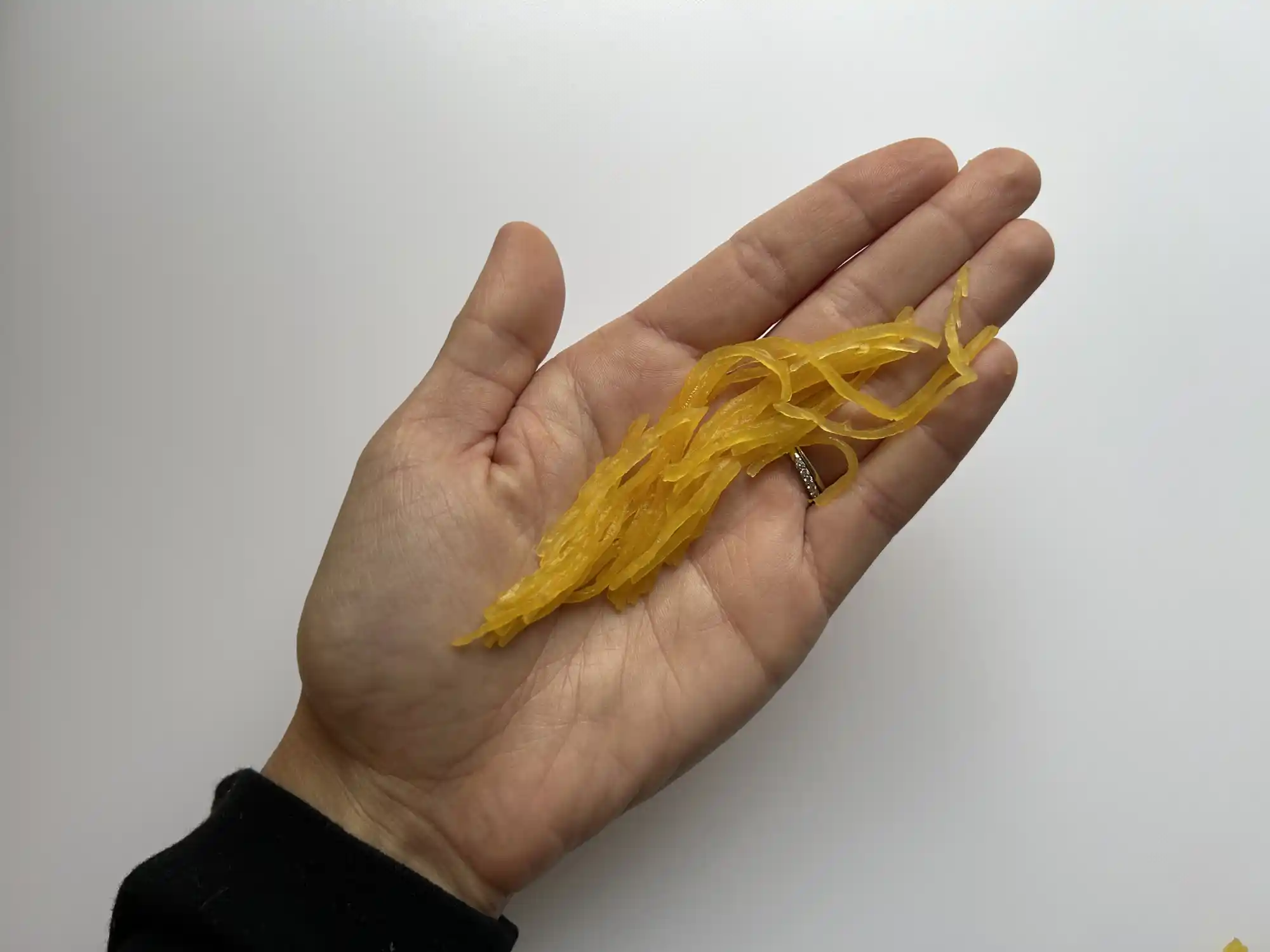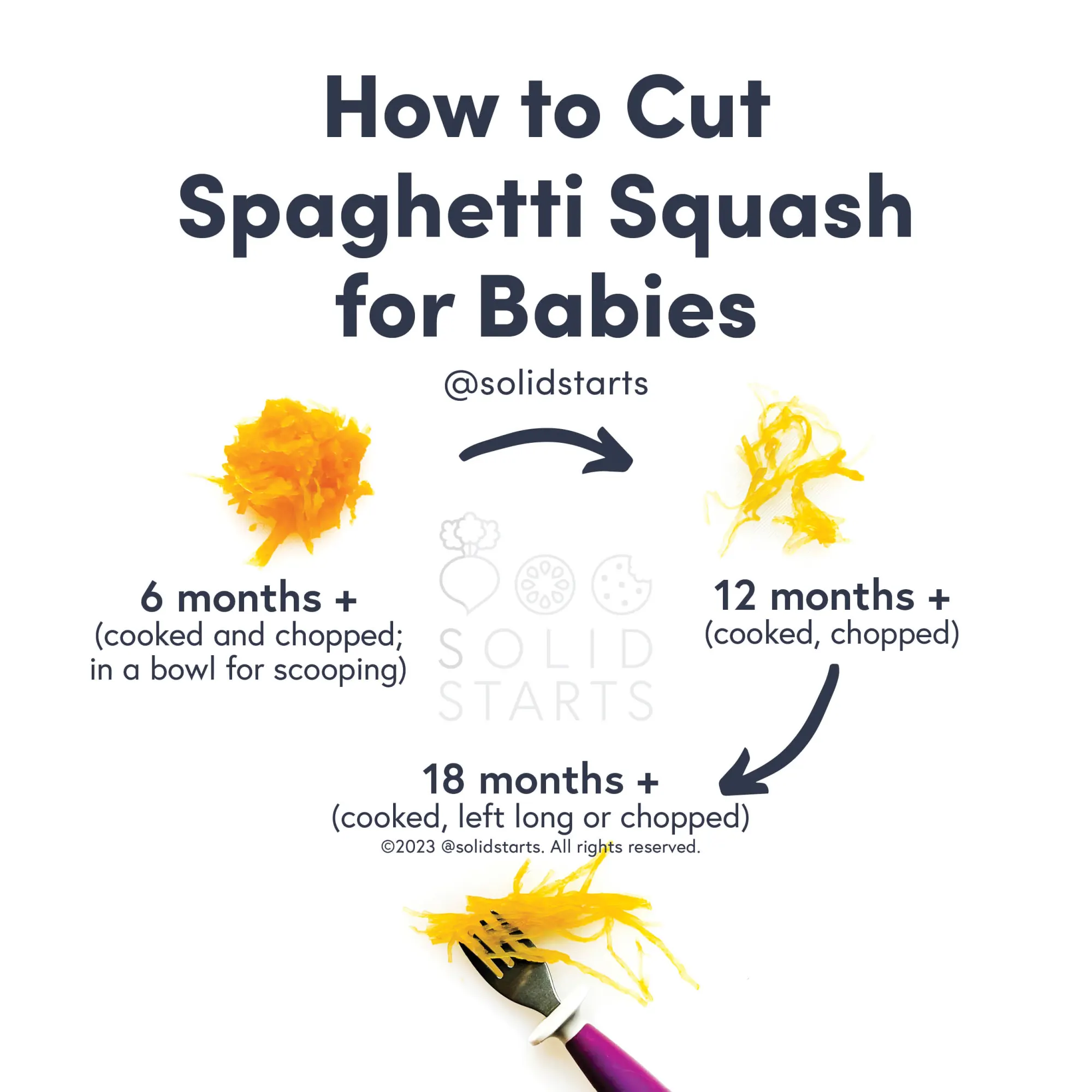Access our First Foods® Database in the Solid Starts App.
Learn moreSpaghetti Squash
Vegetable
Age Suggestion
6 months
Iron-Rich
No
Common Allergen
No

When can babies have spaghetti squash?
Spaghetti squash may be introduced as soon as baby is ready for solids, which is generally around 6 months of age.
Squashes are an ancient agricultural crop, with some estimates tracing spaghetti squash’s ancestors to 10,000 years ago in Mexico, the native terrain of spaghetti squash. Today, spaghetti squash is grown around the world and goes by different names: golden macaroni, noodle squash, spaghetti marrow, and vegetable spaghetti. As the names suggest, the flesh inside a spaghetti squash can be pulled apart to look like pasta after it is cooked.
How do you serve spaghetti squash to babies?
Every baby develops on their own timeline, and the suggestions on how to cut or prepare particular foods are generalizations for a broad audience.
6 months old +:
Serve chopped, cooked squash strands in a bowl for baby to scoop, adding a bit of olive oil or your favorite sauce as desired. Know that strands of spaghetti squash can spread on the tongue and stick in the mouth, which can cause babies to gag—a perfectly normal reflex. If baby is struggling with the texture, try mixing finely chopped cooked spaghetti squash into soft, scoopable foods such as mashed sweet potatoes, or yogurt, then pre-load a baby spoon and offer it in the air to encourage self-feeding. Alternatively, stir cooked, chopped spaghetti squash into eggs or batter to make large, soft patties or fritters that baby can munch on.
9 months old +:
Offer small clumps or long strands of soft, cooked spaghetti squash for baby to pick up with their developing pincer grasp, or continue to mix strands of cooked spaghetti squash into scoopable foods or finger foods like patties or fritters.
12 months old +:
Loosely chop the spaghetti squash strands to offer on their own for the toddler to practice picking up. If you’d like to encourage utensil use, you can pre-load an age-appropriate fork or offer the utensil for the child to try using by themselves. If you’d like, you can even offer a half of a cooked spaghetti squash with the seeds removed as a “boat” and show the child how to scoop out the strands by themselves with their fingers or a utensil. Serving this way isn’t to encourage consumption of more food, but rather to engage the toddler’s senses of curiosity and fun by serving an extra-large piece of food in a novel shape.


Videos
Is spaghetti squash a choking hazard for babies?
Yes. Raw or undercooked spaghetti squash is very firm and challenging to chew, which are qualities that pose an increased risk of choking. To reduce the risk, prepare and serve spaghetti squash in an age-appropriate way as described in the How to Serve section. As always, make sure you create a safe eating environment and stay within an arm’s reach of baby during meals.
Learn the signs of choking and gagging and more about choking first aid in our free guides, Infant Rescue and Toddler Rescue.
Is spaghetti squash a common allergen?
No. Allergies to ingestion of winter squashes, such as spaghetti squash, are uncommon, but have been reported. There have also been reports of people getting an itchy rash on their hands after handling winter squashes. To minimize any reaction, wash your hands immediately after preparing the squash. If baby’s skin is very sensitive, apply a barrier ointment (such as pure white petroleum jelly or a plant-based oil-wax combination) to baby’s face and diaper area before eating, and gently wash face and hands after eating.
People who are allergic to ragweed pollen and/or other fruits and vegetables in the Cucurbitaceae family may also be sensitive to winter squashes, such as spaghetti squash, or experience Oral Allergy Syndrome (also known as pollen-food allergy syndrome). Oral Allergy Syndrome typically results in short-lived itching, tingling, or burning in the mouth and is unlikely to result in a dangerous reaction. Cooking, canning, and/or peeling squashes (as applicable) may help minimize and even eliminate the reaction.
As with introducing any new food, start by serving a small quantity for the first few servings. If there is no reaction, increase the amount over future meals.
Is spaghetti squash healthy for babies?
Yes. Spaghetti squash offers fiber and water, in addition to micronutrients like magnesium, and vitamins A, B6, C, and K. Spaghetti squash also provides plant compounds called carotenoids, which our bodies convert to vitamin A. These compounds support visual health and offer antioxidant and anti-cancer properties.
How do I calm my own nerves around starting solids?
Knowledge and practice with rescue maneuvers. Parents and caregivers who watch the choking and rescue videos in our Starting Solids bundle often share how confident they feel.
How much food should I serve to baby?
When first getting started, offer a small amount and trust that baby knows how to show interest in wanting more by grunting, pointing, or reaching out. Keep in mind that most babies between 6 and 9 months of age do not consume much solid food at first. For babies between 10 and 12 months of age, work toward what a balanced adult meal would look like, just with smaller portions than what you might have. Follow the child’s lead: when baby indicates “more”, offer more food. When baby shows signs that they are finished, stop offering food.
Our Team
Written by
Expert Tips Delivered to Your Inbox
Sign up for weekly tips, recipes and more!
Copyright © 2026 • Solid Starts Inc







